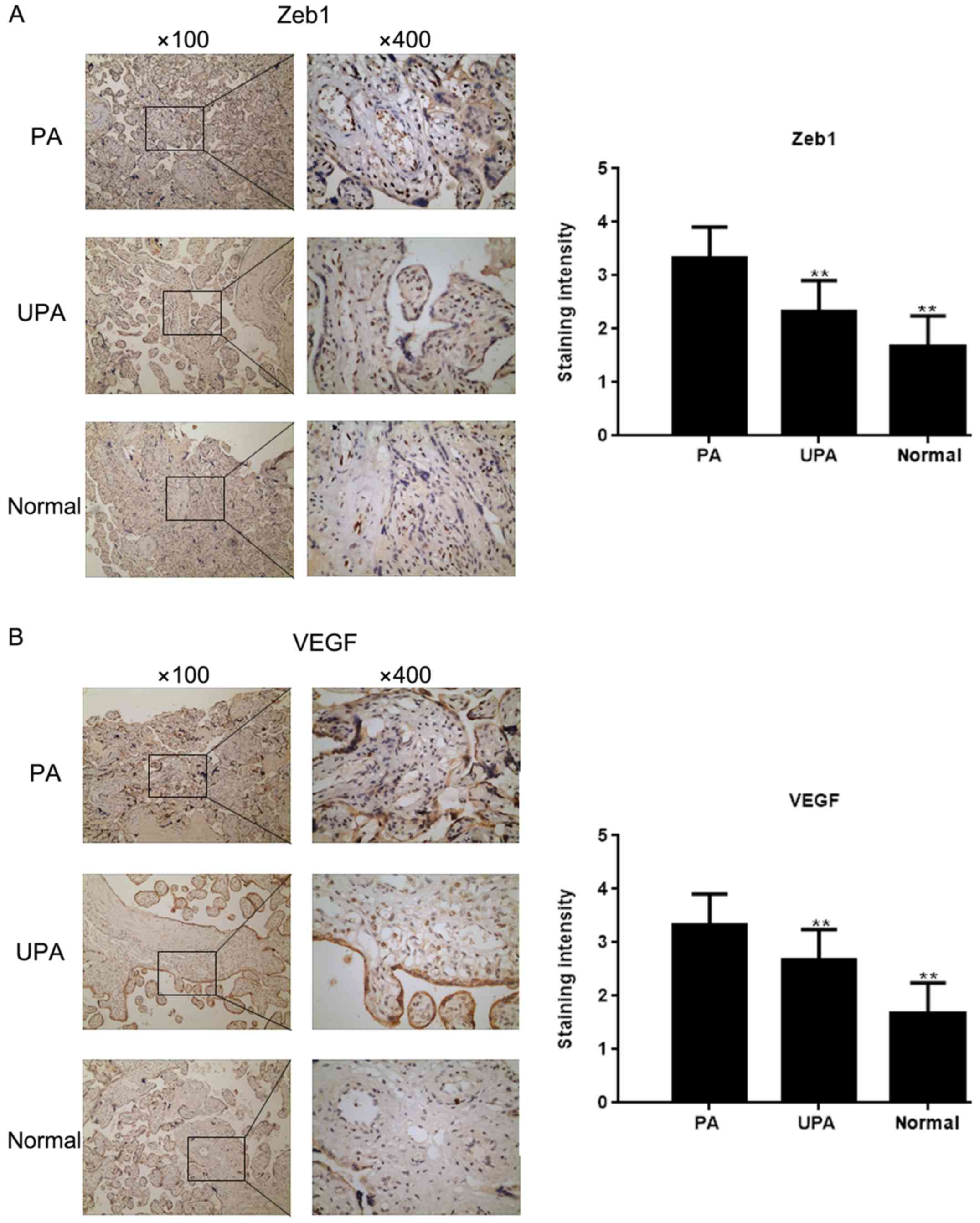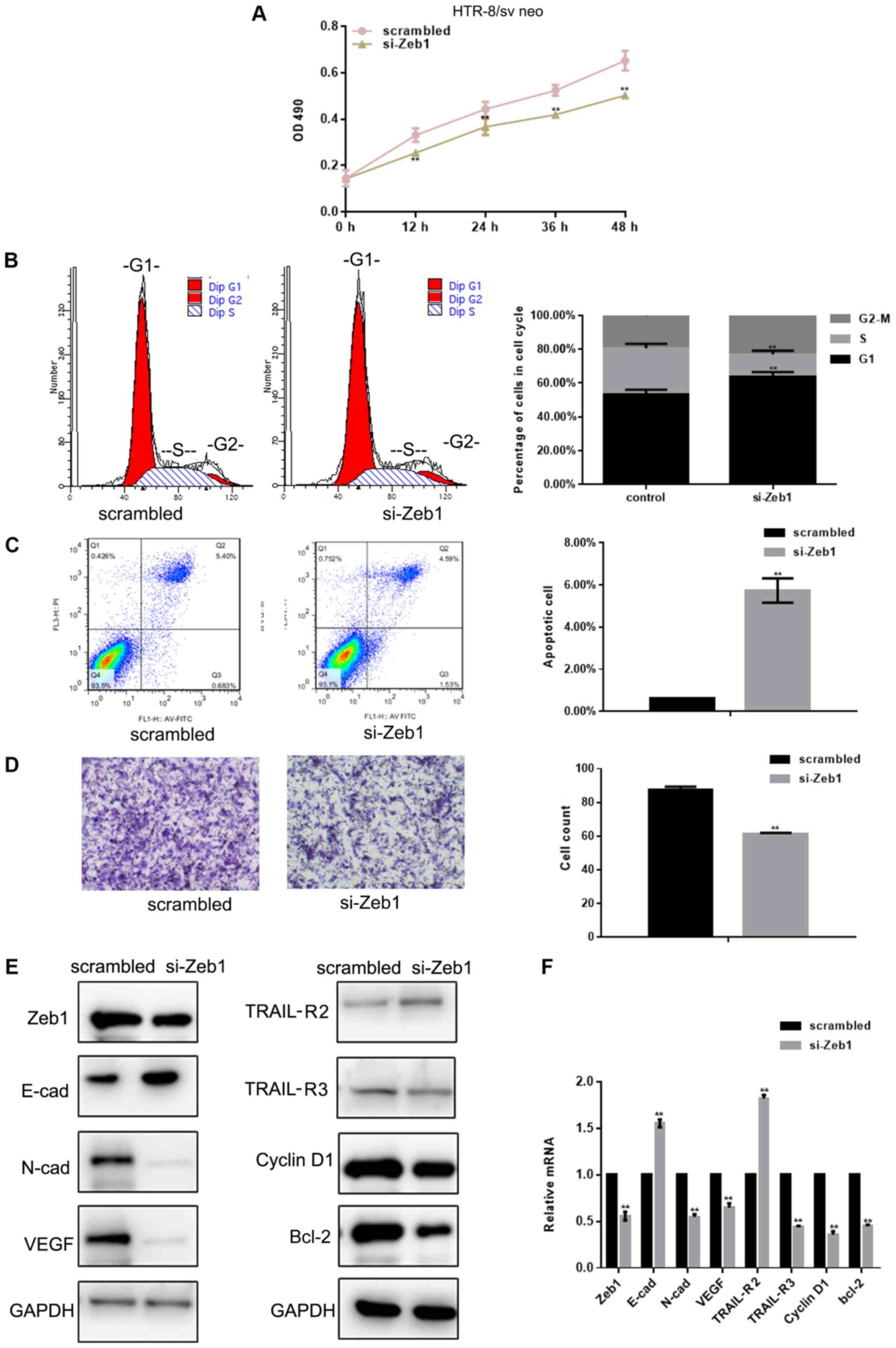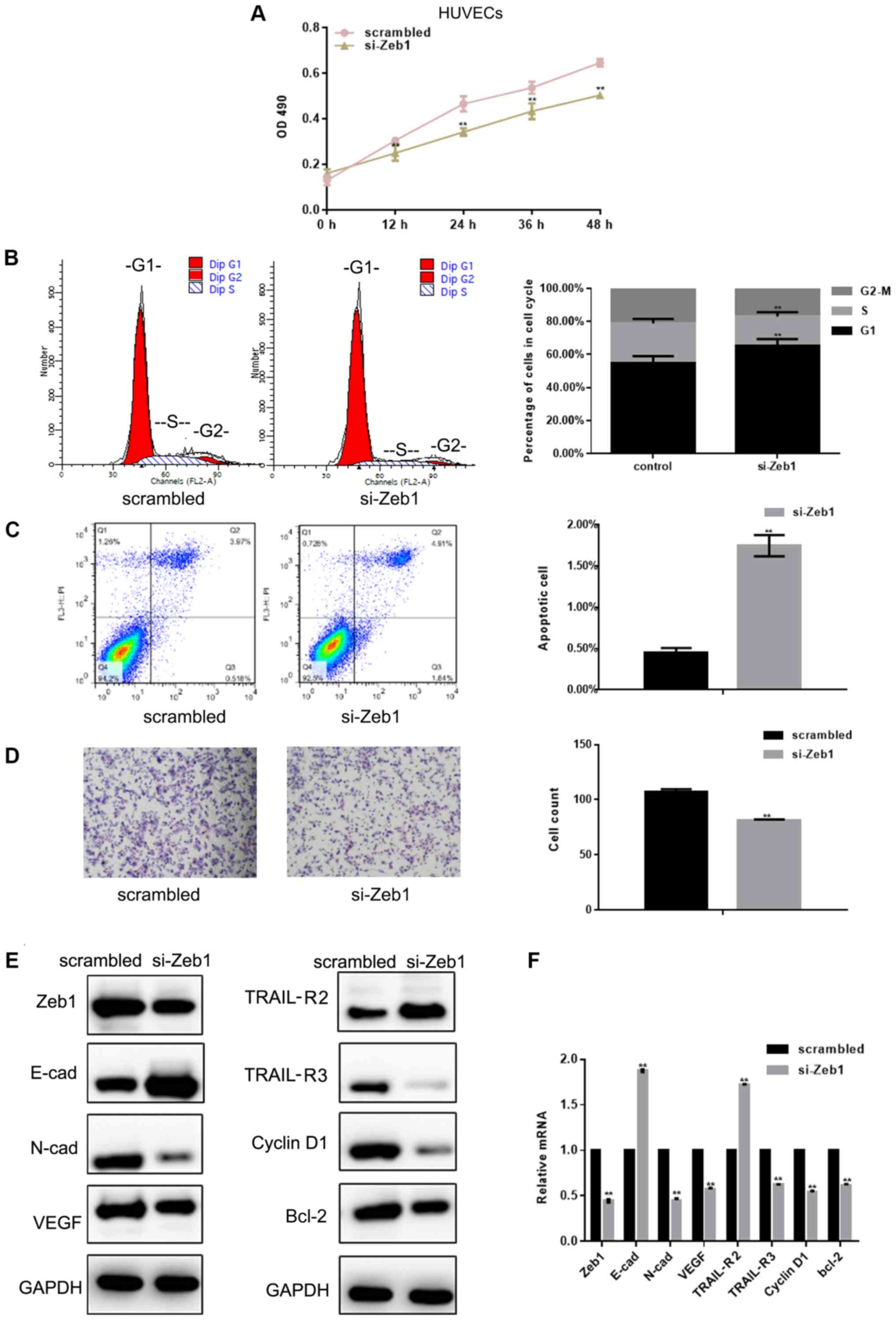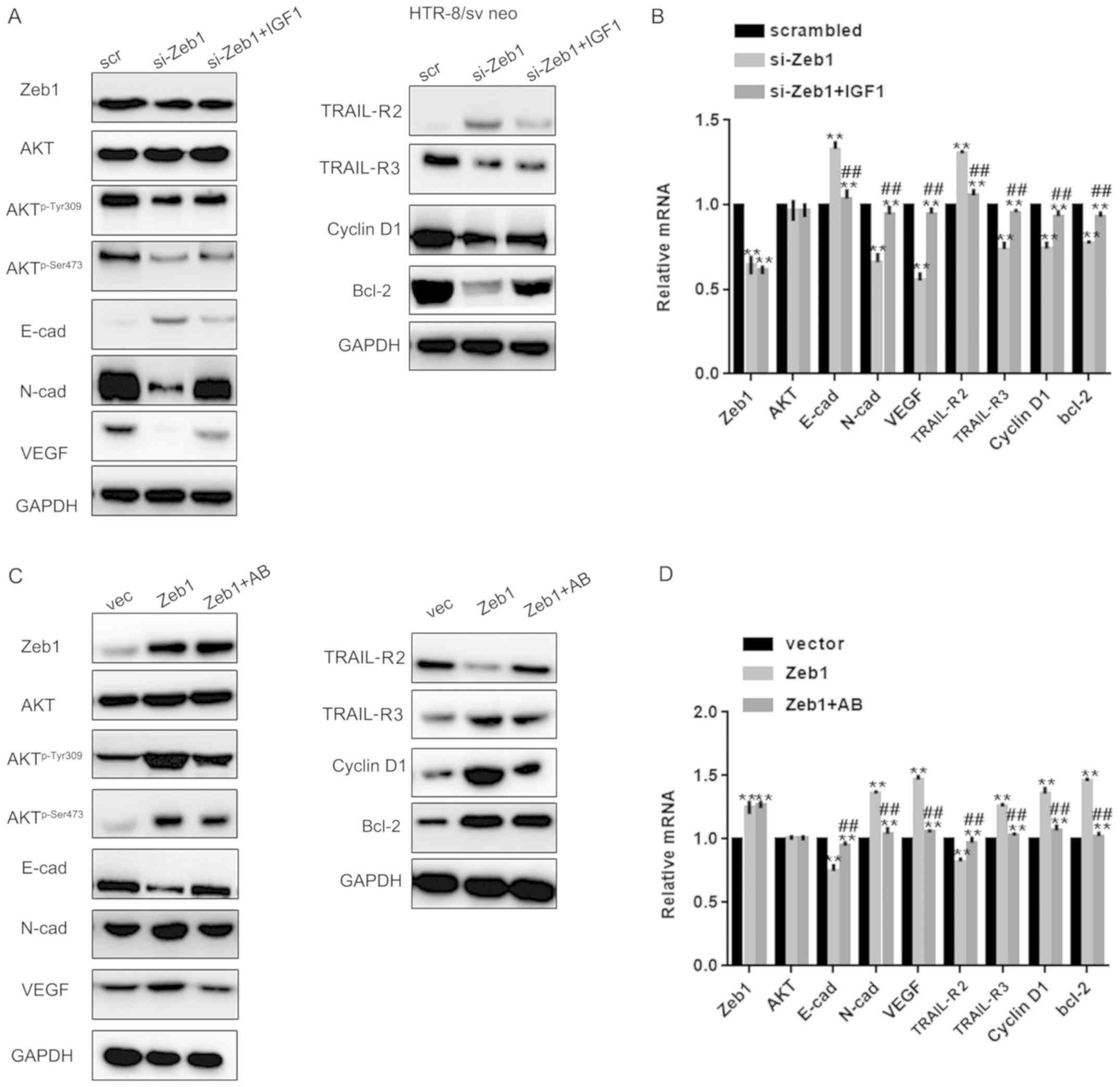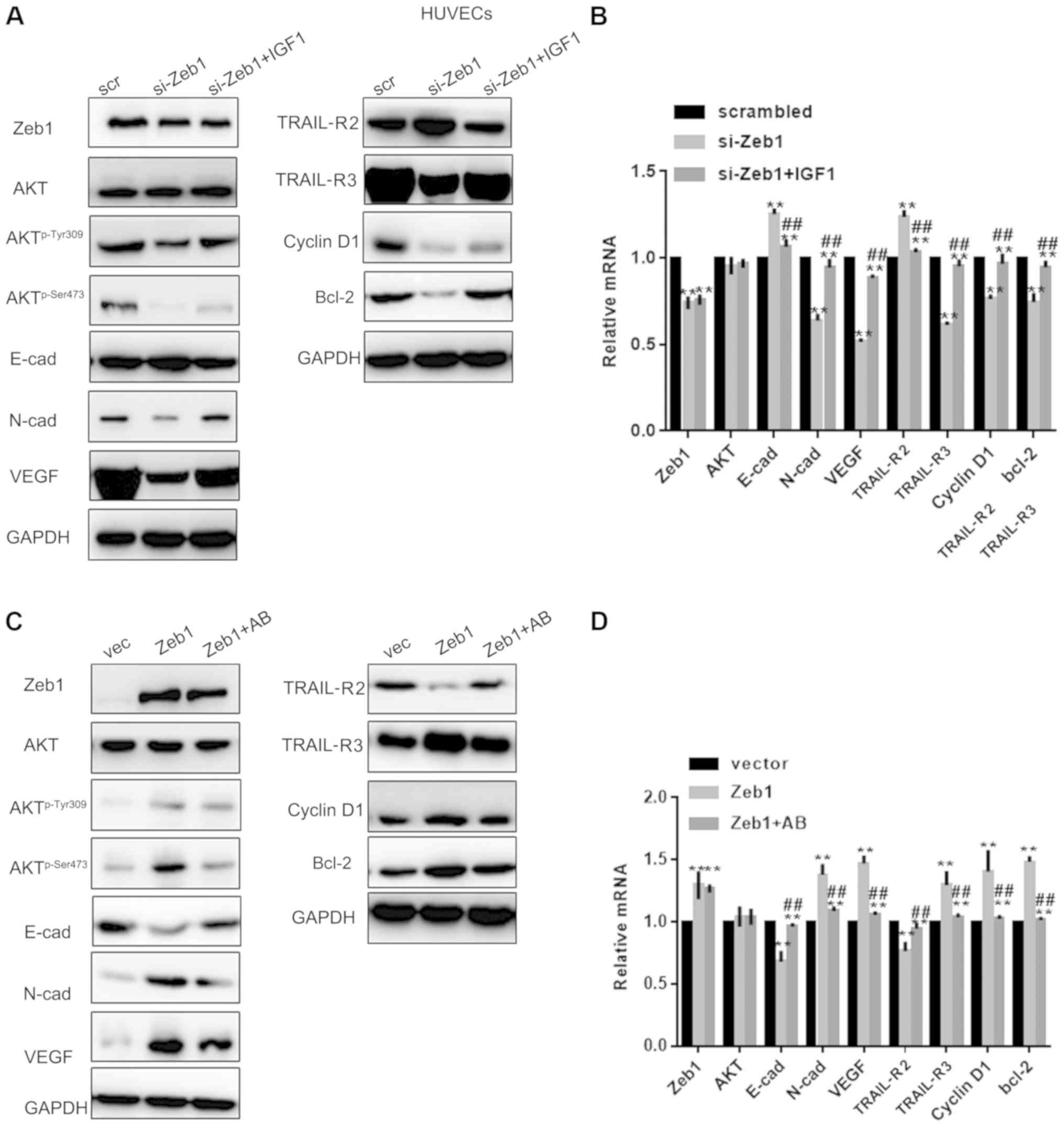|
1
|
Roziana R, Kamarul Azhar K, Lau JH, Aina
MAA, Nadia R, Siti Nordiana A and Mohd Zulkifli K: Morbidly
adherent placenta: One-year case series in a tertiary hospital. Med
J Malaysia. 74:128–132. 2019.PubMed/NCBI
|
|
2
|
Balachandar K and Inglis E: The management
of severe pre-eclampsia and HELLP syndrome in a twin pregnancy with
a known morbidly adherent placenta: A case report. Case Rep Womens
Health. 22:e001142019. View Article : Google Scholar : PubMed/NCBI
|
|
3
|
Bamber JH and Sobers S: The Need to
Consider the Women's Perspective: Neuraxial anesthesia and cesarean
delivery for morbidly adherent placenta. Anesth Analg. 128:e56–e57.
2019. View Article : Google Scholar : PubMed/NCBI
|
|
4
|
Lopes ES, Feitosa FEL, Brazil AV, de
Castro JDV, da Costa JIF, Araujo Júnior E, Peixoto AB and Carvalho
FHC: Assessment of sensitivity and specificity of ultrasound and
magnetic resonance imaging in the diagnosis of placenta accreta.
Rev Bras Ginecol Obstet. 41:17–23. 2019. View Article : Google Scholar : PubMed/NCBI
|
|
5
|
Furukawa S, Fujisaki M, Maki Y, Oohashi M,
Doi K and Sameshima H: Manual removal of placenta in women having
unpredictable adherent placenta. J Obstet Gynaecol Res. 45:141–147.
2019. View Article : Google Scholar : PubMed/NCBI
|
|
6
|
Katzman PJ, Blitman J and Metlay LA: Basal
chronic villitis and disorders of the placental basal plate: A
possible immunological link between hypertensive disorders of
pregnancy and morbidly adherent placenta. Pediatr Dev Pathol. Jan
21–2019.(Epub ahead of print). doi: 10.1177/1093526619825708.
View Article : Google Scholar
|
|
7
|
Wang Y, Wu Z and Hu L: The regulatory
effects of metformin on the [SNAIL/miR-34]:[ZEB/miR-200] system in
the epithelial-mesenchymal transition(EMT) for colorectal cancer
(CRC). Eur J Pharmacol. 834:45–53. 2018. View Article : Google Scholar : PubMed/NCBI
|
|
8
|
Egger JV, Lane MV, Antonucci LA, Dedi B
and Krucher NA: Dephosphorylation of the retinoblastoma protein
(Rb) inhibits cancer cell EMT via Zeb. Cancer Biol Ther.
17:1197–1205. 2016. View Article : Google Scholar : PubMed/NCBI
|
|
9
|
Mooney SM, Talebian V, Jolly MK, Jia D,
Gromala M, Levine H and McConkey BJ: The GRHL2/ZEB Feedback Loop-A
Key Axis in the regulation of EMT in breast cancer. J Cell Biochem.
118:2559–2570. 2017. View Article : Google Scholar : PubMed/NCBI
|
|
10
|
Noman MZ, Janji B, Abdou A, Hasmim M,
Terry S, Tan TZ, Mami-Chouaib F, Thiery JP and Chouaib S: The
immune checkpoint ligand PD-L1 is upregulated in EMT-activated
human breast cancer cells by a mechanism involving ZEB-1 and
miR-200. Oncoimmunology. 6:e12634122017. View Article : Google Scholar : PubMed/NCBI
|
|
11
|
Ohashi S, Natsuizaka M, Naganuma S, Kagawa
S, Kimura S, Itoh H, Kalman RA, Nakagawa M, Darling DS, Basu D, et
al: A NOTCH3-mediated squamous cell differentiation program limits
expansion of EMT-competent cells that express the ZEB transcription
factors. Cancer Res. 71:6836–6847. 2011. View Article : Google Scholar : PubMed/NCBI
|
|
12
|
Rhodes LV, Tate CR, Segar HC, Burks HE,
Phamduy TB, Hoang V, Elliott S, Gilliam D, Pounder FN, Anbalagan M,
et al: Suppression of triple-negative breast cancer metastasis by
pan-DAC inhibitor panobinostat via inhibition of ZEB family of EMT
master regulators. Breast Cancer Res Treat. 145:593–604. 2014.
View Article : Google Scholar : PubMed/NCBI
|
|
13
|
Shu H, Chen H, Yang B, Chang Z, Xiong M
and Chen W: Aberrant expression of E-cadherin and integrin β-1 in
trophoblasts is associated with malignant gestational trophoblastic
diseases. Int J Gynecol Cancer. 23:749–754. 2013. View Article : Google Scholar : PubMed/NCBI
|
|
14
|
Al-Khan A, Bulmer JN, Chantraine F, Chen
CP, Chen Q, Collins S, Cotechini T, Fitzgerald JS, He M, Holland O,
et al: IFPA Meeting 2012 Workshop Report III: Trophoblast
deportation, gestational trophoblastic disease, placental
insufficiency and fetal growth restriction, trophoblast
over-invasion and accreta-related pathologies, placental thrombosis
and fibrinolysis. Placenta. 34 (Suppl):S11–S16. 2013. View Article : Google Scholar : PubMed/NCBI
|
|
15
|
Livak KJ and Schmittgen TD: Analysis of
relative gene expression data using real-time quantitative PCR and
the 2(-Delta Delta C(T)) method. Methods. 25:402–408. 2001.
View Article : Google Scholar : PubMed/NCBI
|
|
16
|
Wang Y, Jia L, Wang B, Diao S, Jia R and
Shang J: MiR-495/IGF-1/AKT Signaling as a novel axis is involved in
the Epithelial-to-Mesenchymal transition of oral squamous cell
carcinoma. J Oral Maxillofac Surg. 77:1009–1021. 2019. View Article : Google Scholar : PubMed/NCBI
|
|
17
|
Hu T, Lu MN, Chen B, Tong J, Mao R, Li SS,
Dai P, Tan YX and Xiyang YB: Electro-acupuncture-induced
neuroprotection is associated with activation of the IGF-1/PI3K/Akt
pathway following adjacent dorsal root ganglionectomies in rats.
Int J Mol Med. 43:807–820. 2019.PubMed/NCBI
|
|
18
|
Kuang WH, Dong ZQ, Tian LT and Li J: IGF-1
defends against chronic-stress induced depression in rat models of
chronic unpredictable mild stress through the PI3K/Akt/FoxO3a
pathway. Kaohsiung J Med Sci. 34:370–376. 2018. View Article : Google Scholar : PubMed/NCBI
|
|
19
|
Zhang Q, Zhou L, Guan Y, Cheng Y and Han
X: BENC-511, a novel PI3K inhibitor, suppresses metastasis of
non-small cell lung cancer cells by modulating β-catenin/ZEB1
regulatory loop. Chem Biol Interact. 294:18–27. 2018. View Article : Google Scholar : PubMed/NCBI
|
|
20
|
Matsubara S: Balloon uterine tamponade
device after peripartum hysterectomy for morbidly adherent
placenta. Obstet Gynecol. 133:1882019. View Article : Google Scholar : PubMed/NCBI
|
|
21
|
Shmakov RG, Vinitskiy AA, Chuprinin VD,
Yarotskaya EL and Sukhikh GT: Alternative approaches to surgical
hemostasis in patients with morbidly adherent placenta undergoing
fertility-sparing surgery. J Matern Fetal Neonatal Med.
32:2042–2048. 2019. View Article : Google Scholar : PubMed/NCBI
|
|
22
|
Shin JO, Nakagawa E, Kim EJ, Cho KW, Lee
JM, Cho SW and Jung HS: miR-200b regulates cell migration via Zeb
family during mouse palate development. Histochem Cell Biol.
137:459–470. 2012. View Article : Google Scholar : PubMed/NCBI
|
|
23
|
Kokkinos MI, Murthi P, Wafai R, Thompson
EW and Newgreen DF: Cadherins in the human
placenta-epithelial-mesenchymal transition (EMT) and placental
development. Placenta. 31:747–755. 2010. View Article : Google Scholar : PubMed/NCBI
|
|
24
|
Bottalico B, Larsson I, Brodszki J,
Hernandez-Andrade E, Casslén B, Marsál K and Hansson SR:
Norepinephrine transporter (NET), serotonin transporter (SERT),
vesicular monoamine transporter (VMAT2) and organic cation
transporters (OCT1, 2 and EMT) in human placenta from pre-eclamptic
and normotensive pregnancies. Placenta. 25:518–529. 2004.
View Article : Google Scholar : PubMed/NCBI
|
|
25
|
Duzyj CM, Buhimschi IA, Motawea H, Laky
CA, Cozzini G, Zhao G, Funai EF and Buhimschi CS: The invasive
phenotype of placenta accreta extravillous trophoblasts associates
with loss of E-cadherin. Placenta. 36:645–651. 2015. View Article : Google Scholar : PubMed/NCBI
|
|
26
|
Incebiyik A, Kocarslan S, Camuzcuoglu A,
Hilali NG, Incebiyik H and Camuzcuoglu H: Trophoblastic E-cadherin
and TGF-beta expression in placenta percreta and normal
pregnancies. J Matern Fetal Neonatal Med. 29:126–129. 2016.
View Article : Google Scholar : PubMed/NCBI
|
|
27
|
Guimaraes GC, Alves LA, Betarelli RP,
Guimarães CSO, Helmo FR, Pereira Júnior CD, Corrêa RRM and
Zangeronimo MG: Expression of vascular endothelial growth factor
(VEGF) and factor VIII in the gilt placenta and its relation to
fetal development. Theriogenology. 92:63–68. 2017. View Article : Google Scholar : PubMed/NCBI
|
|
28
|
Klettner A, Kaya L, Flach J, Lassen J,
Treumer F and Roider J: Basal and apical regulation of VEGF-A and
placenta growth factor in the RPE/choroid and primary RPE. Mol Vis.
21:736–748. 2015.PubMed/NCBI
|
|
29
|
Mathew S, Sundararaj S, Mamiya H and
Banerjee I: Regulatory interactions maintaining self-renewal of
human embryonic stem cells as revealed through a systems analysis
of PI3K/AKT pathway. Bioinformatics. 30:2334–2342. 2014. View Article : Google Scholar : PubMed/NCBI
|
|
30
|
Lv WM, Zhao Y, Yang G, Dong SY, Zhang GH,
Zhang Y, Li GZ and Cheng Y: Role of Ras, ERK, and Akt in
glucocorticoid-induced differentiation of embryonic rat
somatotropes in vitro. Mol Cell Biochem. 391:67–75. 2014.
View Article : Google Scholar : PubMed/NCBI
|
|
31
|
Godoy-Parejo C, Deng C, Liu W and Chen G:
Insulin stimulates PI3K/AKT and cell adhesion to promote the
survival of individualized human embryonic stem cells. Stem Cells.
Apr 25–2019.(Epub ahead of print). doi: 10.1002/stem.3026.
View Article : Google Scholar : PubMed/NCBI
|
|
32
|
Park JH and Han HJ: Caveolin-1 plays
important role in EGF-induced migration and proliferation of mouse
embryonic stem cells: Involvement of PI3K/Akt and ERK. Am J Physiol
Cell Physiol. 297:C935–C944. 2009. View Article : Google Scholar : PubMed/NCBI
|
|
33
|
Tan Y, Xin X, Coffey FJ, Wiest DL, Dong LQ
and Testa JR: Appl1 and Appl2 are expendable for mouse development
but are essential for HGF-Induced akt activation and migration in
mouse embryonic fibroblasts. J Cell Physiol. 231:1142–1150. 2016.
View Article : Google Scholar : PubMed/NCBI
|



